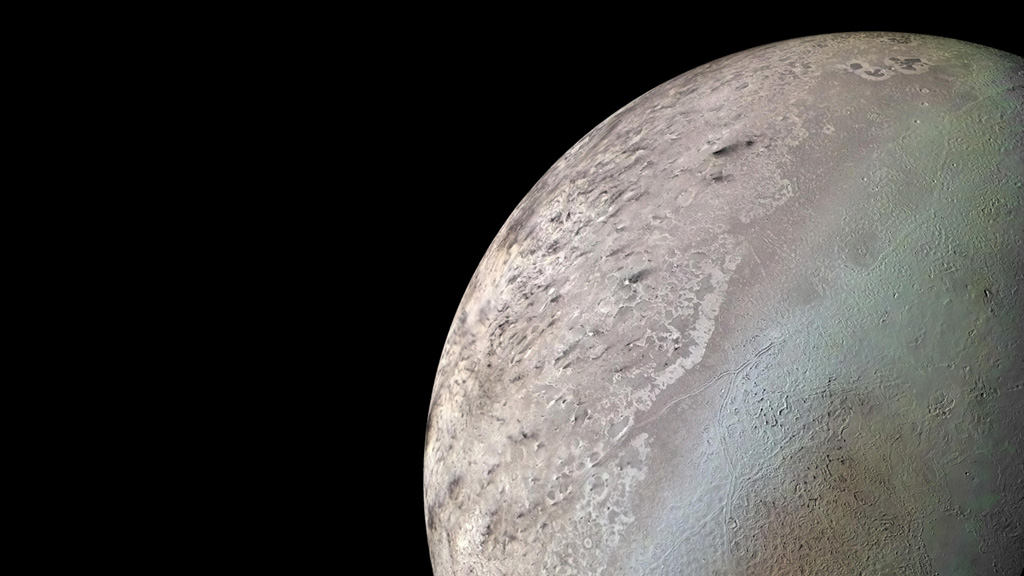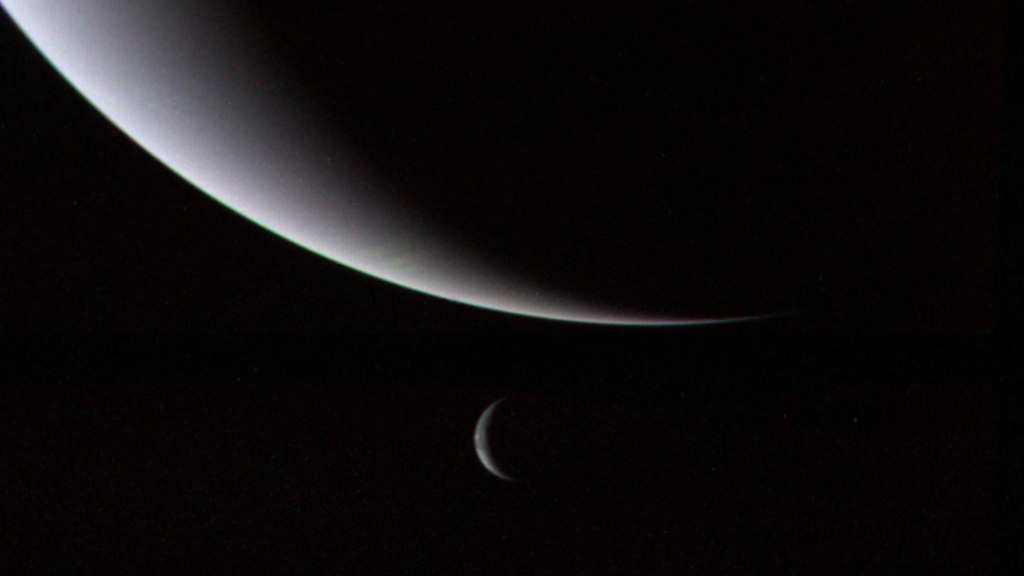Planets and Moons
ID: 11598

In late August 1989, NASA’s Voyager 2 spacecraft sailed past Neptune’s largest moon, Triton, providing the first images of this distant world. Now, a stunning new view of the flyby has been created using historic data collected by the spacecraft. Triton is part of a family of 14 moons that orbit Neptune. It has a diameter of 1,700 miles, making it roughly the size of Earth’s moon. Deposits of nitrogen, methane and carbon dioxide ice can be found on Triton's surface, where Voyager 2 recorded temperatures of -391°F. Although it's classified as a moon of Neptune, scientists believe Triton is actually an object from the outer solar system that was captured by the planet’s gravity long ago. Watch the video to see a visualization of Voyager 2's encounter with Triton.



Experience Triton




Story Credits
Please give credit for this item to:
NASA's Goddard Space Flight Center
Video courtesy of NASA/JPL-Caltech/Lunar & Planetary Institute/Paul Schenk and John Blackwell
Cover image courtesy of NASA/JPL/USGS
Voyager 2 images courtesy of NASA
NASA's Goddard Space Flight Center
Video courtesy of NASA/JPL-Caltech/Lunar & Planetary Institute/Paul Schenk and John Blackwell
Cover image courtesy of NASA/JPL/USGS
Voyager 2 images courtesy of NASA
Short URL to share this page:
https://svs.gsfc.nasa.gov/11598
Keywords:
SVS >> App
NASA Science >> Planets and Moons
https://svs.gsfc.nasa.gov/11598
Keywords:
SVS >> App
NASA Science >> Planets and Moons







